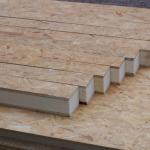How to quickly and effectively clean the heels of rough skin
The skin of the heels tends to coarsen from time to time, every day it is subjected to constant physical impact. Periodically, there is a need to clean the heels of rough skin. Many people carry out this procedure incorrectly, choosing ineffective methods with severe keratinization or, conversely, using hard methods if the heels are in good condition.
Rough skin on the heels appears due to improper and rare care. Other reasons include:
- Long stay on the feet during the day.
- Frequent walking barefoot.
- Uncomfortable shoes.
- Age. The older the person, the faster he develops keratinization of the heel region.
- Excess weight, which put additional stress on the heels.
- Lack of minerals and vitamins in the body. Deficiency of these elements leads to excessive dryness and cracking.
- Fungal disease.
- The skin of the foot can become coarse and crack due to diseases of various organs and systems: the endocrine system, kidneys, gastrointestinal tract.
How to fix it yourself
There are many simple and affordable ways to get rid of rough and rough skin on the heels. Each of them is suitable for different problems: the heels can become rough and clogged with dirt, crack. Cracks can hurt, and this condition requires emergency removal of the keratinized cover, and certain treatment.
Folk recipes for ointments and creams
Ointment from wax and propolis. The basis is ordinary vegetable oil, on which it is necessary to fry the onion. A glass of the resulting product is taken, a small piece of propolis, about 100 g of wax. Everything must be brought to a boil over low heat. After complete dissolution of the wax, allow the mixture to cool slightly, and then pour into a jar, where it will take the final desired consistency and become ready for use.

Glycerin and ammonia. The components are mixed in equal proportions, the resulting can not be applied with a greasy layer. Such an ointment will help soften the problem area and have a cleansing and disinfecting effect.
To get rid of rough heels, a regular baby cream is suitable, which will prevent excessive dryness.
Baths and lotions
A simple version of the bath is a bowl of warm water, in which you should soar your feet for 30-40 minutes, then remove the top layer of skin and grease with a nourishing cream.
To enhance the effect, decoctions of medicinal plants, baking soda can be added to the bath, it is allowed to steam your legs and with the addition of table or sea salt, glycerin, soap chips, essential oils. Each substance has a different effect: salt acts as an antiseptic, glycerin softens the skin well, soda suppresses the fungus.
A popular recipe is a hydrogen peroxide bath. Its use helps to quickly remove dirt from the legs and destroy dead cells. Keep your feet in peroxide water for no longer than 15 minutes.
Lotions are "cosmetic masks" for the heels and are not suitable for removing a large stratum corneum.
lotion recipes
- Mix starch, lemon juice and yolk, apply to the disturbing area, wait for the mixture to dry. Wash off the mask with water and use a moisturizer.
- Apply blue clay to the feet, previously diluted with water to a mushy state. Clay will give tenderness and smoothness to the heels.
- Lotions based on aloe juice will soften hard areas of the foot. You can use not only juice, but also finely chopped leaves or make gruel out of them. Aloe should be fixed with a film or bandage, left overnight, wearing warm socks on top.
- A mixture of aspirin (aka acetylsalicylic acid), ethyl alcohol and iodine. You can do both compresses, or simply rub the legs with a mixture after steaming.
- Glycerin and vinegar in a ratio of 3:1.
- Warm up a cup of kefir for a comfortable temperature (36-37 degrees). Pour half a serving of kefir into plastic bags. Put the bag on the leg, on top - a sock. Leave on your feet for 1-2 hours. After such a procedure, the heels become soft, coarse areas are easier to remove.

Many people who have used these methods post a lot of testimonials with photos showing successful results.
Removal with abrasives
Due to its solid structure, pumice stone easily removes corns on the feet and toes, cracks, the upper layers of the roughened epidermis, calluses on the feet and hands.
Do not use pumice on dry skin - this will worsen the situation, increase the risk of infection, and the number of cracks may increase.
Step-by-step instructions for using pumice:
- Clean feet from dirt, keep 5-10 minutes in the bath.
- After steaming the legs, you can start working with a pumice stone. For better glide, soap or shower gel should be applied to the heels. The movements of the pumice stone should be circular with moderate force.
- Stop the procedure if burning and redness appear.
- Rinse off the removed pieces of skin under running water, if desired, carry out additional scrub treatment or peeling.
- Apply a thick layer of nourishing oily cream and put on socks, the skin should not be dry after this procedure, otherwise all actions will be less effective.
Electric pumice Scholl (Scholl) - is a roller with an abrasive surface, mounted on the handle. It has the same effectiveness as pumice.
Metal scraper. It has a high effectiveness in the fight against rough heels and corns, but greatly deforms the skin. It should only be used in emergency cases. A regular file or pedicure brush also helps get rid of hard epidermis.
Contraindications for heel cleaning
There are no clear contraindications for cleaning the heels. There are restrictions on some folk remedies using drugs purchased at a pharmacy or unusual components.

The main warning is individual intolerance to any substance. For example, baths with hydrogen peroxide cannot be used for heart disease, phlebitis, or the presence of transplanted organs.
The child should not clean the heels with coarse substances, this will damage his delicate skin and activate the rapid coarsening of the epidermis.
Homemade heel care tips
You should not use emergency methods to remove a thick layer of rough darkened dermis. Some people manage to use sandpaper, a grater for this purpose, to clean with a razor or blade. The machine is dangerous: inexperienced people can cut off large pieces of the dermis, opening direct access to the infection, which will subsequently require additional treatment.
The basic rule when processing heels is to wash and soak. After such manipulations, it will be easier to clean the heels from rough skin, during the procedure and after it there will be a minimum of discomfort.
You should constantly take care of the legs to avoid illness: the use of abrasive products several times a month and daily moisturizing of the sole with creams. Hot baths with medicinal herbs and oils will serve as an excellent prevention.




